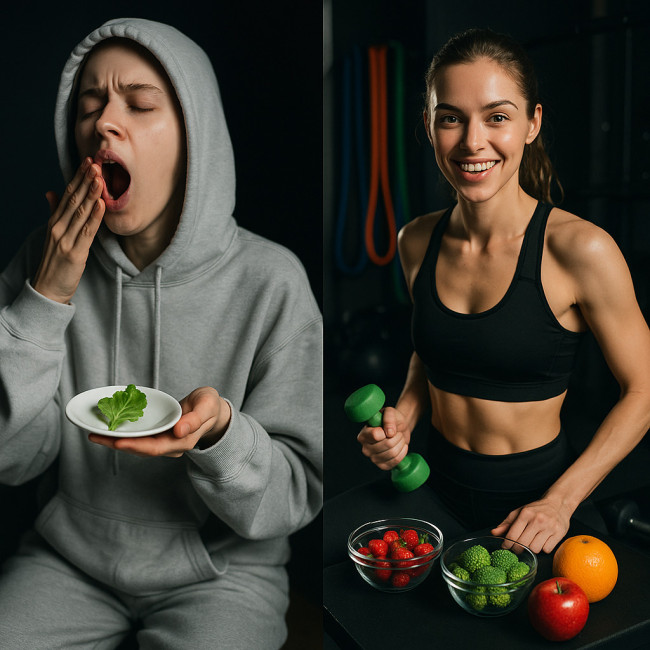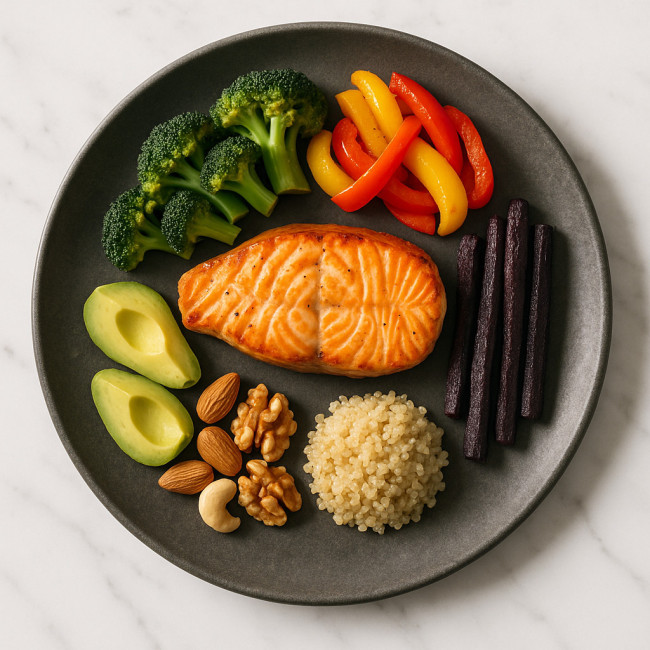Fitness programs that keep models runway-ready without extreme dieting
Forget crash diets. Discover evidence-based fitness programs that sculpt lean muscle, boost stamina and keep models camera-confident all year long—while still letting you enjoy dinner out with friends.
Why “eat less, weigh less” is outdated

Severe calorie cuts slow your metabolism, sap energy and leave hair, skin and mood in crisis. Modern fashion houses now expect talent to deliver vitality on set—something only balanced training and smart nutrition can offer. Backstage physicians have documented ferritin crashes, menstrual loss and anxiety spikes whenever models flirt with sub-1 000-kcal streaks. Casting directors may still value angular silhouettes, but they also watch for the tell-tale tremor of low blood sugar when a candidate struts. In short, an exhausted body simply cannot showcase couture as intended.
- Metabolic damage: Repeated low-calorie phases reduce thyroid output by up to 30 %.
- Runway stamina: A 15-minute show demands roughly 1 000 brisk steps; glycogen-depleted bodies wobble, literally.
- Mental clarity: Back-to-back castings require sharp focus to follow choreography and direction.
The three pillars of runway-ready training
1. Strength & shape: Resistance circuits
Lean muscle is the body's style tape: it lifts posture, smooths lines and raises basal metabolic rate. Alternate upper- and lower-body supersets using bands, dumbbells or body weight.
- Goblet squat × 12
- Band row × 15
- Reverse lunge × 10 each leg
- Push-up on knees × 12
Repeat the circuit three times. The entire set takes under 20 minutes—ideal before your first fitting. Complement these workouts with the tips in this model stamina guide for even faster gains.
2. Endurance without bulk: Low-impact cardio
High-intensity intervals burn fat quickly but risk joint strain when heels are your daily uniform. Swap two HIIT sessions a week for:
- Power Pilates sequences
- 40-minute incline walks (5–7 % grade)
- Rowing machine pyramids: 250 m, 500 m, 750 m, then reverse
These modes keep heart rate in the 70–80 % zone—perfect for fat oxidation—while preserving knee and ankle integrity.
3. Poise & recovery: Mobility and nervous-system care
Grace on the runway starts at the spine. Spend 10 minutes daily on thoracic rotations, hip openers and diaphragmatic breathing. For guided mobility flows, dancers swear by the methods in this cross-conditioning roadmap.
Sample week: 5-day runway-ready plan
| Day | Morning (≤ 30 min) | Evening (≤ 20 min) |
|---|---|---|
| Mon | Strength circuit A | Hip mobility + breathwork |
| Tue | Incline walk 40 min | Core Pilates flow |
| Wed | Strength circuit B | Yin yoga stretch |
| Thu | Rowing pyramid | Foam-roll full body |
| Fri | Mixed barre & bands | Guided meditation 10 min |
Nutrition: fuel, don't starve

Moderate energy deficit—about 300 kcal below maintenance—is plenty for gradual fat loss without muscle wastage. Anchor every plate with the “3-2-1” formula: Picture each meal as a backstage tech rehearsal for your metabolism: the lights need steady wattage, the soundboard needs clear signals. By feeding fibres, fats and amino acids in the ratio below you stabilize leptin, tame cravings and give muscles the raw material to repair after long days in heels. Maintain this approach and you can float through fittings without the dizzy spells that sabotage confidence.
- 3 palm-sized veggies
- 2 thumbs of healthy fat
- 1 palm of lean protein
Whole grains or fruit fit around training windows. Combine with mindful eating—chew each bite 20 times—and you'll stay satiated.
Backstage survival toolkit
Packable snacks
Airport-style security and tight call times mean food options can be bleak. Keep the following in your tote:
- Unsalted almond sachets (100 kcal)
- Plant-based protein shake (25 g protein)
- Banana or dried figs for fast carbs
Micro-workouts between castings
Stuck in a holding room? Two rounds of air squats, wall push-ups and calf raises wake up circulation. More ideas live in this external training comparison.
Stress management
Cortisol spikes encourage fat storage at the waist—hardly runway material. Integrate:
- Box breathing (4-4-4-4) before fittings
- Blue-light-blocking glasses after 9 p.m.
- 10-minute gratitude journaling
Real-world success stories
“Switching from 900-calorie crash diets to strength-based training helped me land three campaigns this season. I'm eating 2 000 kcal, training 45 minutes four times a week and never felt sharper.” — Ivy, 24, Milan
Agency scouts confirm they now look for healthful glow over extreme thinness. Our industry's own model training hub has doubled its enrolment since 2022, mirroring this shift.
FAQ
- How many hours should a model train weekly?
- Four to five hours spread across strength, cardio and mobility sessions are enough for maintenance and gradual improvement.
- Will lifting weights make me bulky?
- No. Hypertrophy requires calorie surplus and high training volume. Our circuits prioritize muscle tone and posture, not size.
- Can I still enjoy restaurant meals?
- Yes. Pick protein-heavy mains, swap creamy sauces for vinaigrettes and share dessert. One flexible meal won't derail progress.
- What if I have zero gym access while traveling?
- Resistance bands and body-weight moves cover all bases. Download hotel-room routines from the sample week above.
- How fast will I see changes?
- Expect noticeable improvements in energy within two weeks and visible physique refinement in six to eight weeks.
Ready to walk the talk?
Forget hunger pangs. Combine the program above with disciplined rest, hydration and professional posing practice. Your next booking could be one smart workout away. Start today—your future catwalk photos will thank you.











